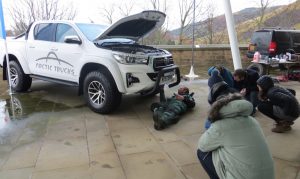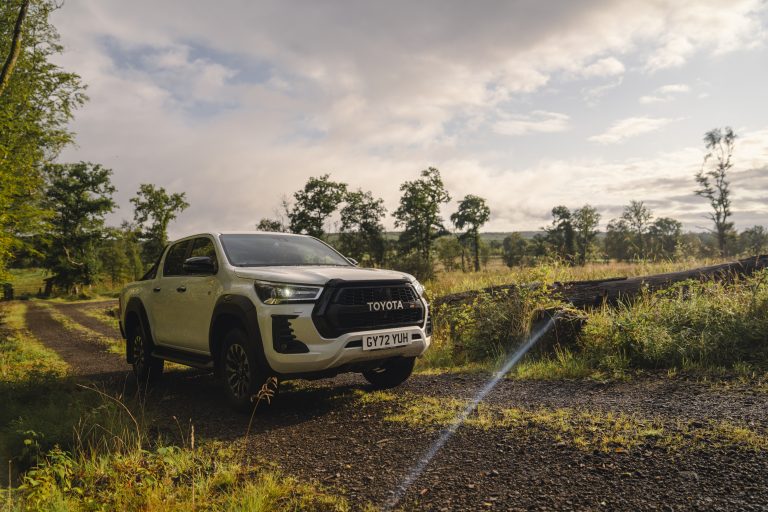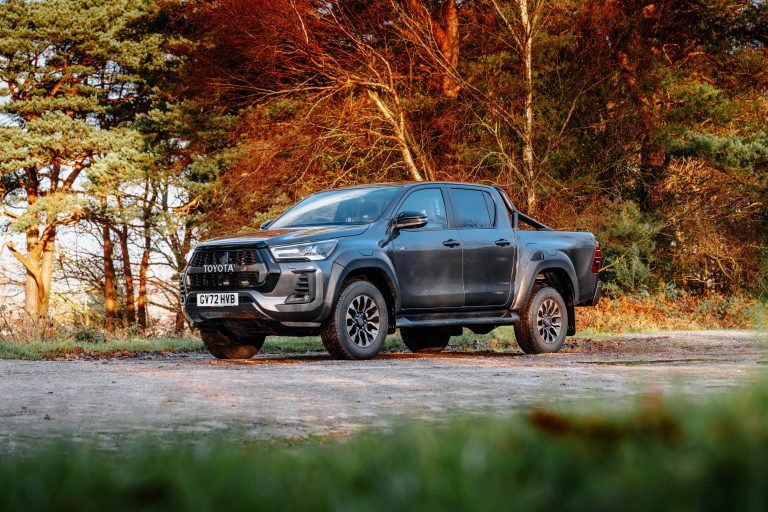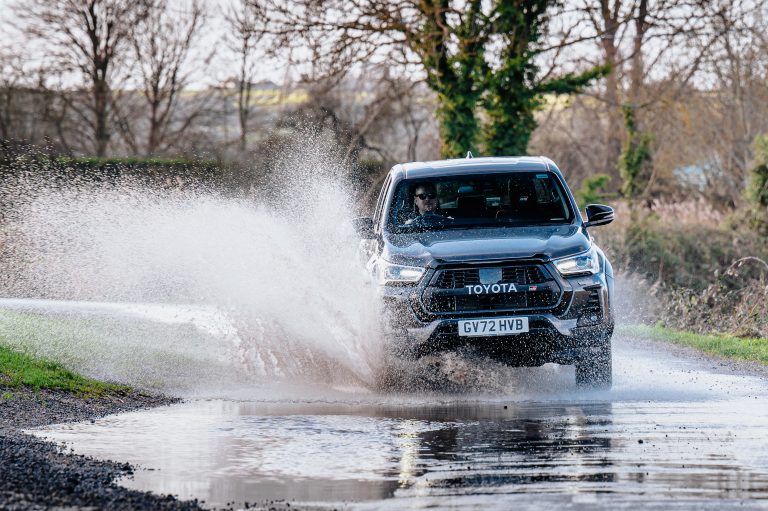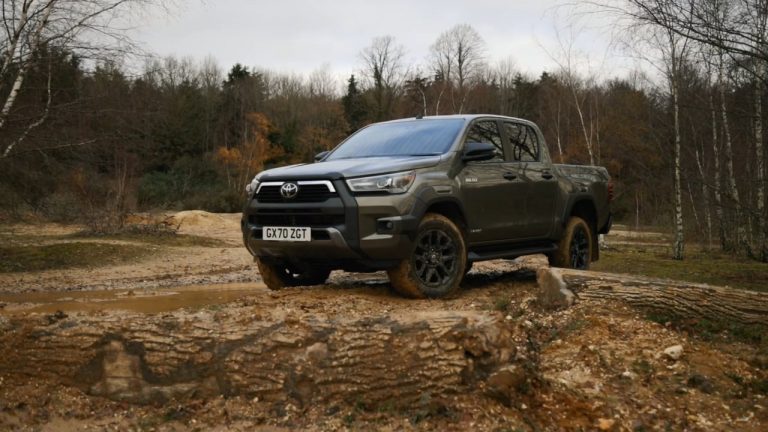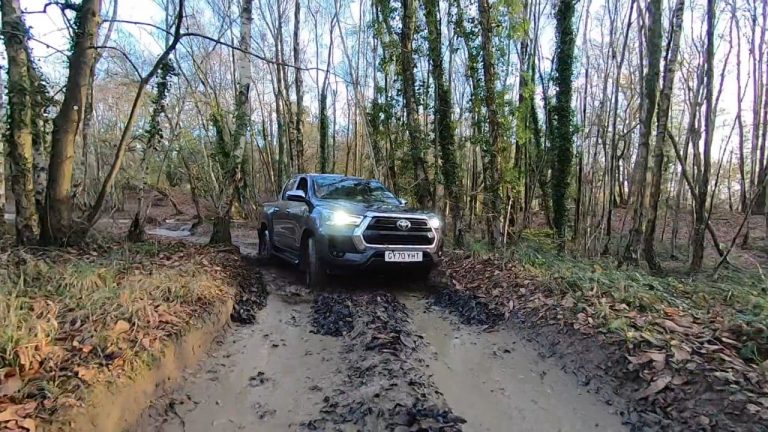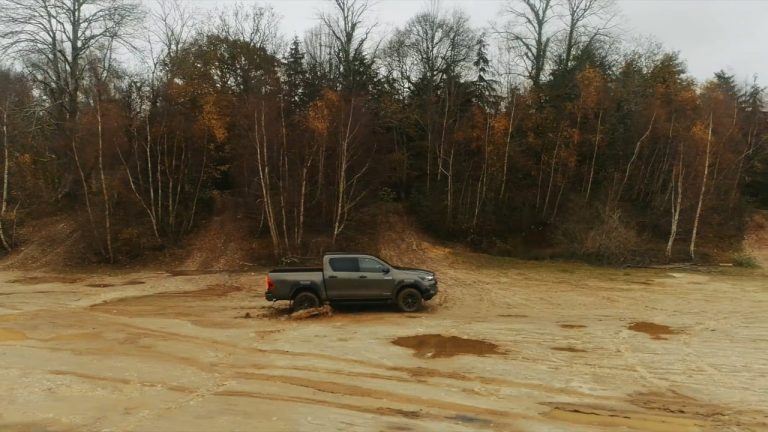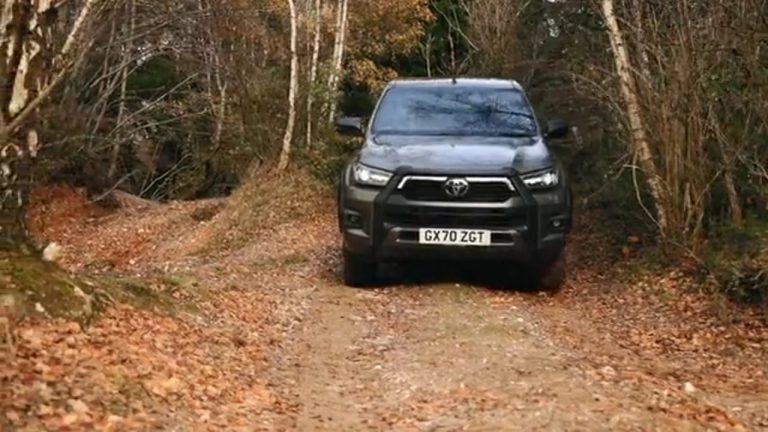Western Toyota and Arctic Trucks Highlight Key Lessons in Vehicle Maintenance for Serious Off Road Adventures
For humanitarian aid workers working in remote areas, reliable transport is essential and workers must be confident that their vehicle and the essential supplies on board can get them to their destination and back to base again without difficulty.
There are some important lessons in vehicle maintenance from these expeditions that can be learnt by anyone planning a serious off road trip. Toyota Western, a dealer in Edinburgh, the Lothians and Fife, got together with engineering experts, Arctic Trucks, the all-terrain masterminds who were behind the Toyota Hilux Arctic Truck AT38 that conquered the North Pole, to give insights into the secrets of expedition vehicle maintenance.
Russell Drew and Nick Cranfield, with 34 years of experience in expeditionary vehicle maintenance between them, advise: “If you and your equipment cannot reach your destination then you might as well remain at home. There are various scenarios which could jeopardise an expedition or field mission and expertise is only ever as useful as the vehicle you are travelling in.
Here are Russell and Nick’s top 10 tips for effective expeditionary vehicle maintenance.
- Always conduct a ‘First Parade Check’ of the vehicle before use.
Then, throughout the day carry out periodic checks. The nature of the terrain being traversed will determine the frequency of short stop checks. At the end of the day, or after use, the vehicle should be inspected, all fluids topped up and any damage or faults repaired and spare parts sourced. Doing this at the end of the day means you and your vehicle are prepared should you need to make a fast move during the night or early morning. - Pay particular attention to tyre management.
Off-road vehicles normally carry one spare, so tyres must be checked to ensure they are inflated to the correct pressure and have sustained no damage. Incorrect pressures increase fuel consumption, can affect vehicle handling and stability and make the tyres more susceptible to wear and tear. Regularly check tyre pressures and know when to over-inflate or deflate them to suit the terrain. As a rule of thumb, deflate the tyres to a lower pressure for surfaces such as sand and mud, as this gives a larger contact patch for better grip in these conditions. Remember to re-inflate the tyres when you return to normal road conditions though. - Know your vehicle.
You need to know which oils and fluids are specific to your vehicle. All fluid levels must be at maximum, not somewhere in between maximum and minimum. Keeping them fully topped up ensures the systems don’t become starved on rough terrain and provides the driver with a benchmark. A measurable pointer that can be monitored to indicate oil or coolant consumption can be useful. - Inspect and test the vehicle’s tool kit regularly.
Where does the jack go? Does it work? Can you remove all the wheelnuts if necessary? Can you remove the spare wheel and is it fit for purpose? Undo all the wheel nuts and retighten. Ensure you know that you can remove any wheel if necessary. Replace locking wheelnuts, which add complexity, with standard wheelnuts. - Think about what would happen if you run out of fuel.
Are there any special procedures to bleed and restart the fuel system? What measures can you take to prevent contaminated fuel from damaging the major engine components? After all, you may be in a situation where you have no choice but to refuel from a jerry can or a dubious fuel source. - Identify the location of your fuse box and relays and carry spare fuses.
If you need to, you can replace a fuse and can ‘borrow’ one from another circuit – for example, if the wiper fuse blows, it can be replaced with rear fog light fuse. Ensure you replace with a fuse of the same or lower current rating, because failure to do this can result in major component failure or, at worst, a vehicle wiring fire. - Always check the recovery points on a vehicle.
Identify the tie-down points and correct towing points (known as the rated recovery points). Are they fit for purpose? Recovery points can get damaged in rough terrain; you may need to consider alternative attachment points that will not damage the vehicle. Will the shackles in your vehicle’s kit fit the recovery points when you need them in an emergency? - Secure all cargo inside the vehicle.
All personal kit, supplies and vehicle recovery equipment must be strapped down. When ascending or descending slopes, loose kit can become a missile in a vehicle. Secure the cargo to avoid injury to the driver and passengers and damage to the vehicle interior by a hard object such as a case containing tools becoming airborne. - Prepare, Prepare, Prepare.
Get the basics right and the rest will follow easily. Just as you would carry a first aid kit in case of emergency, remember, the vehicle could save your life, so respect it. Carry enough basic kit to repair it, including a tyre repair kit and spare auxiliary drive belt and know how to use it all. As you progress on your drive, identify areas where potential repairs could be carried locally. Mark them on a navigation log – you may need to revisit them in the future. - Vehicle selection is paramount.
The first questions are: what vehicle is everyone using and why? The abundance of Toyotas throughout the developing world will indicate the key points of your vehicle selection. They are more reliable, less complicated and spares are easily acquired, even in remote areas. The Hilux and Land Cruiser models can often be maintained without the need for diagnostic equipment and therefore the complex cascade faults that can compromise a vehicle’s ability to perform in an arduous environment are eliminated.
ENDS


